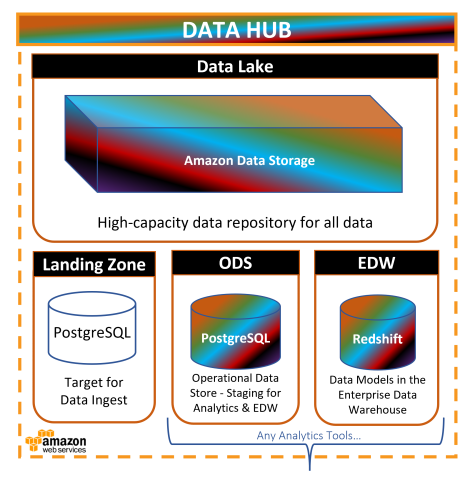The Data Hub is UT’s next generation data ecosystem based on industry-leading cloud architecture and designed to meet the growing need for data and analytics capabilities at UT Austin. The Data Hub provides a centralized data repository to store and manage comprehensive academic and institutional data and can connect to a range of advanced analytics tools to enable state-of-the-art data analytics.
Based on a simple hub-and-spoke model, the data hub integrates with UT operational systems, stores the data in a data lake (the hub) and provides workspaces (the spokes) for data developers to transform operational data into valuable insights that advance university outcomes.
Why this approach and how can colleges, schools, and units use it? Learn More Here (UT Login Required).
Data Hub Components
Data Lake
The Data Lake contains selected feeds and batch loads of unrefined, raw data from UT systems and other sources. It also includes historical, transformed data as the central data repository.
Operational Data Store (ODS)
With proper authorization, the data from the Data Lake can be functionally validated, modeled, and transformed as derived data within the ODS via validated business logic. The data definitions for these transformations enable use and reuse in data spokes that serve as workspaces for CSUs and campus-level units.
Enterprise Data Warehouse (EDW)
The new data warehouse can be optimized for operational performance and needs.
Landing Zone
Just as it sounds, the landing zone provides a place (when needed) for data replications and movements from UT systems before it is systematically moved to the Data Lake, ODS, or EDW.


